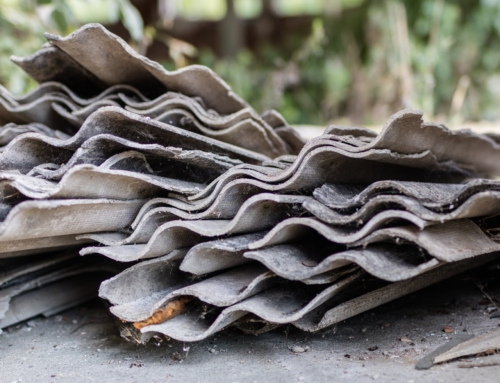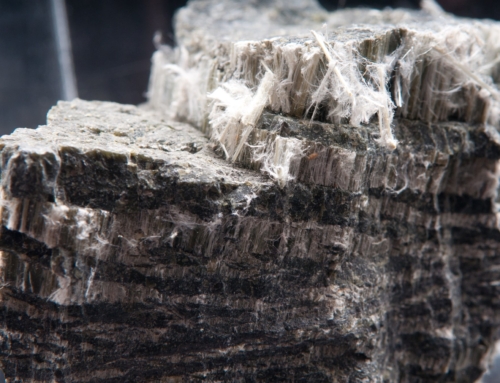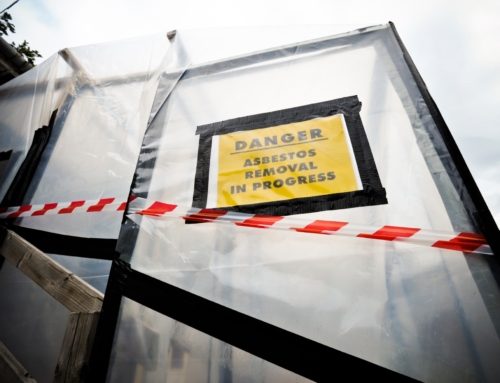Before its total ban in 1999, asbestos was hailed as a wonder material in construction and housebuilding, used for many different applications. It was particularly popular during the 1960s and 1970s (although it was also used extensively before this), which is why it’s still found in many houses and flats built during this time.
For homeowners of properties built then, it’s important to have good asbestos awareness and know the right time for its removal, if necessary, especially if you’re planning a renovation.

When was asbestos used?
Due to a range of desirable characteristics, asbestos had widespread use in construction from 1930, but was particularly popular in housebuilding during the 1960s and 70s. It was commonly used in materials used for insulation, roofs, floors, textured coatings and ceiling tiles.
The 60s also saw a boom in the highest risk forms of asbestos-containing materials (ACMs), such as asbestos insulation board. Unfortunately, the dangers to health weren’t known at the time, so it can still be found in multiple locations within a property.
Why is asbestos dangerous in old homes?
Asbestos fibres are microscopic, and they can become airborne if they’re disturbed. This could happen naturally as materials degrade over the years or when building work is being done. Even tasks like sanding or drilling close to the asbestos-containing material could cause the release of dangerous fibres.
Asbestos fibres can remain in the lungs for decades, eventually leading to diseases like lung cancer, asbestosis and mesothelioma. It could take decades for symptoms to appear.
If you have asbestos in your property, don’t panic! Undisturbed asbestos is often low risk, so it’s best to get it surveyed by a professional to understand whether immediate action is needed.
Where is asbestos found in 1960s and 1970s houses?
In houses built during the 1960s and 1970s, asbestos can be present in lots of areas, posing a risk to occupants and contractors if it’s disturbed. Typical spots where you’ll find ACMs lurking include insulation around pipes, boiler flues and ductwork.
Other common ACMs are textured ceilings and walls (Artex), corrugated asbestos cement sheets and guttering on roofs, vinyl floor tiles (and the adhesives used to fix them), garages, farm buildings, partition walls (AIB), fireproof panels in airing cupboards or behind fireplaces, and more.
Request an asbestos survey to work out where ACMs are hiding at your property.
Should you get an asbestos survey if you live in an older property?
If you live in a property built before 2000, or if you suspect that ACMs are still present, it’s a good idea to arrange for a professional asbestos survey to be carried out. You may also wish to do this if you’re planning to sell a property with asbestos in the future.
During an asbestos inspection, an expert will safely identify any areas where they think asbestos may be present and assess its condition if they’re able to do so. They may also take samples if needed (e.g., you’re planning refurbishment work). The results of the survey should enable you to assess exposure risks and plan its ongoing management. You may decide to leave the asbestos in situ or ask for a safe removal.
What is an asbestos refurbishment survey?
An asbestos refurbishment survey is more intrusive than your average asbestos assessment, like a management survey. They’re specifically designed for properties undergoing renovation or refurbishment work. This is one of the riskiest times for any ACMs left in situ within a property as even having vibrating tools and machinery working nearby could disturb the fibres.
During the inspection, a qualified asbestos surveyor will perform in-depth checks throughout the property, including concealed areas, to identify ACMs that could get disturbed during the renovation process. This provides essential information to plan a safe renovation with appropriate precautions to prevent asbestos exposure. If required, your contractor can also plan how to remove the asbestos safely during the work.
Asbestos laboratory analysis can take anything from a few days (in urgent cases) to a few weeks. Asbestos testing costs will depend on the turnaround time, the number of samples taken and the type of analysis required. Labs with an UKAS accreditation are preferred for their reliable results.
What is licensed asbestos removal?
The Control of Asbestos Regulations 2012 is the governing legislation in this area, aiming to protect those working with asbestos or at risk of exposure (e.g. they work or live in close proximity to ACMs). The guidelines stress the importance of hiring qualified asbestos contractors for work, especially high-risk tasks.
Any high-risk asbestos work should be handled by a licensed asbestos contractor. This includes projects in which there is a high risk of exposure to asbestos fibres, such as the removal of sprayed-on coatings, pipe lagging, loose fill insulation and asbestos millboard. It also covers cleaning up large quantities of fine debris containing asbestos dust.
Does asbestos always need to be removed from older properties?
No, even if you live in a 1960s or 1970s house with asbestos, if the ACMs remain in good condition and are unlikely to be disturbed, they can often be left in place.
Asbestos removal is typically only necessary if the ACMs are damaged or likely to be disturbed when planning building work (such as home renovations). This stresses the importance of regular inspections to keep an eye on any materials containing asbestos, even if they’re tucked away in your attic.
If you do go ahead with asbestos removal in your 1960s or 70s home, it should be completed by a professional who will ensure strict safety protocols are followed. This includes the safe disposal of asbestos waste at designated facilities (as it can’t go in regular landfill).
Need an asbestos surveyor in London and Surrey? Get in touch
Goodbye Asbestos performs safe asbestos surveys and removals across the area, including Haywards Heath and Headley Down. To book an asbestos service, contact us.




